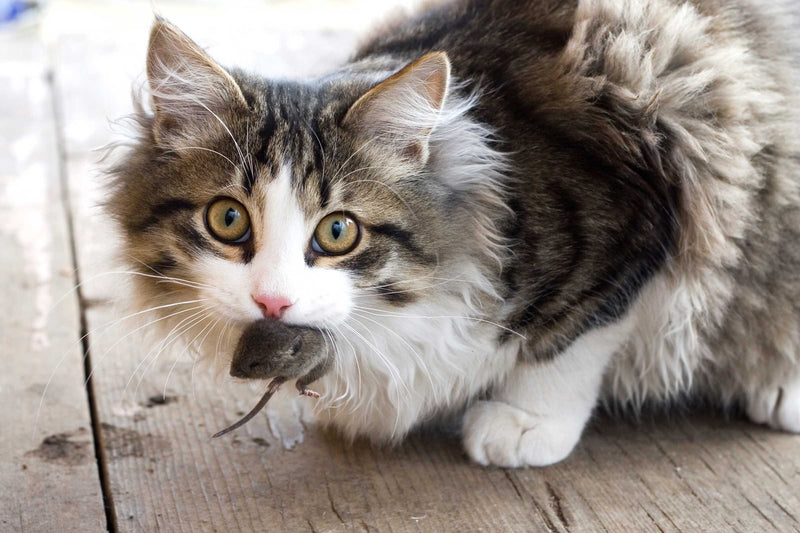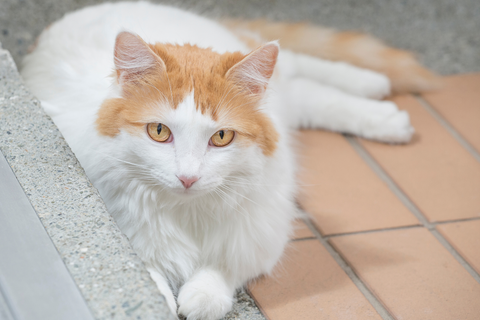
Even small cat behavior annoyances can become significant issues. Behavior issues, while a broad umbrella term, is one of the more common reasons animals, including cats, are surrendered to animal shelters. Many of these behaviors are reshaped with just a little enrichment, effort, and time. Below are some common areas of behavioral concerns and ways to fix them if they are not issues for your cat, GREAT! Having this knowledge can help you avoid simple errors in the future that could lead to behavioral concerns.

Litter box & Inappropriate Elimination
When inappropriate elimination occurs, there are a few things to consider. In general, we want to rule out any medical concerns first. Inappropriate elimination can be an indication of pain, infection, or other underlying medical condition that needs to be assessed by a veterinarian. Once medical conditions are ruled out, behavioral concerns can be addressed. When considering external causes for inappropriate elimination, we want to consider matters, as much as possible from the cat's perspective. We assess the litter box environment, changes in routine, considerations of outside noises or stress factors, and we look for patterns in the elimination as clues. This is often an area to work through with your coach to identify specific factors but in general, let's look at considerations:
The litter box. Many inappropriate elimination issues are resolved with adjustment to the litter box, so starting there can be helpful. In multi-cat households, there should be at least one box per cat. The boxes should be cleaned daily, and litter refreshed regularly. If there has been a recent change to litter, this may be a factor in your cat not wanting to enter the box. If there is a lid, try removing it, if the box is near a washer or anything that may make "scary" noises, consider relocating it. If the box has high sides, your cat may not be able to climb in comfortably. Assess the size of the box. Often litter boxes are tiny, and cats can not comfortably eliminating in them.
If the inappropriate elimination is near but not in the box, these factors are often key, and adjustments result in the resolution of the problem. If none of these issues are a concern, we turn to look at where the elimination is happening. Again, this may be a place to discuss with your coach regarding specifics. Try blocking access to the area or putting a litter box in the place where the elimination is happening or as near to it as possible.
Scratching
When cats scratch furniture or objects they should not, it can be very destructive and costly. With more knowledge and understanding regarding the nature of declawing, fewer cats are declawed, thankfully. Claws can lead to destruction, frustration, and cats released outdoors or worse surrendered because of damage. Also, on occasion, cats with claws can cause injury in the household. Scratching is a natural behavior of marking. When provided appropriate surfaces and redirected to them for this behavior, it is not generally overly difficult to redirect scratching to the proper place. Cat trees are often pre-equipped with desirable vertical scratching surfaces like carpet that will naturally attract cats. Using an attractant like catnip or pheromone-based scratch attractants can also help redirect unwanted scratching to appropriate surfaces. This is another time to reinforce behaviors positively. Block access to areas cats are currently scratching if possible or consider scratch tape, or soft-paws while the behaviors are being reshaped.
Attacking
Cats are hunters. Hunting and pouncing can be acute behavior as a kitten, but when cats age if this behavior does not resolve, it can become problematic. Playful or aggressive attack behaviors in cats can lead to injury of people or pets and can quickly become a nuisance. When the behavior is directed towards other cats in the home, it can lead to decreased confidence in the pet that is regularly attacked. This behavior can generally be reshaped and redirected toward appropriate toys and furniture for playing. To do so requires vigilance on the owner's account to ensure that the behavior is caught and redirected. Reshaping behaviors can take time and patience. Ensuring environmental and food enrichment basics are met is also very important for cats that are showing excessive stalking behaviors that may escalate into attacking.
Biting
Biting often occurs as a result of increased stimulation in cats. Often owners report when petting their cat they will turn and bite them, seemingly out of nowhere. Biting is a signal of the threshold of stimulation met or exceeded. It is best to attempt to stop interactions before overstimulation occurs, and biting is the exhibited behavior. Keep interactions short and watch your cat for signals and signs that they may be becoming overstimulated. Some of these signs include enlarged pupil size, increased breathing or holding the breath (generally right before biting), ears back or pinned down, overall tense body posture or feeling. Paying attention to your cat's body language is the best way to avoid interactions escalating to this point.
Demanding Food and Attention
One complaint cat owners will often discuss are begging behaviors. Cats are known to beg for food as well as be somewhat rude and demanding in expressing their desire for attention. Cat owners often have similar stories of cats lying on laptops, keyboards, head-butting during phone calls. Cats may wake owners early in the morning with nibbles, foot attacks, vocalization and an array of other somewhat annoying behaviors when they demand food or attention. There are many different techniques for reshaping undesirable behaviors. You may want to consider discussing the specifics of your situation with your coach.
Feeding to a cat's instincts of small, frequent meals may decrease the begging behaviors, but will also decrease the association between the owner being the source of food, begging behaviors may decrease and hunting and seeking behaviors will increase.

When cats are begging for attention, there are a few things to consider. Since the interactions are generally short-lived, is this a good time to take a break and enjoy a little time with your pet? Often we forget to stop and break when we are working, and this can be healthy for us. If your cat is attention-seeking at a time, you can use a little distraction, consider the break. If you can not afford the break, consider remote or self-interacting toys for your cat. Technology is advancing every day, and these toys are set to timers, motion-activated, and app-controlled options that provide an excellent choice for every household. These toys can occupy and stimulate your cat's mind while allowing you to stay focused on the task at hand.
Meet the author: Beckie Mossor, RVT
Beckie Mossor is a Registered Veterinary Technician living in Southport, NC. Beckie has enjoyed a diverse career in small animal, large animal, and mixed practices, academia, management, and private consultant. Beckie is co-founder of Veterinary Advancements, a private consulting firm, and is a professional medical responder with the ASPCA Cruelty Recovery Team. She is the host of Clinician’s Brief the Podcast and co-hosts Veterinary Viewfinder and Making Sense of Pets podcasts.
In support of her profession, Beckie is proud to serve as Executive Director for the Human-Animal Bond Association, Member at Large for the Society for Veterinary Medical Ethics, and former Executive Board Member for both the national and state technician associations.
As a Basepaws coach for Coach My Cat, Beckie uses her experience and knowledge of feline nutrition, behavior, health, and enrichment needs to guide clients through a better understanding of their cats needs. As a coach Beckie can help address behavioral, nutritional, or environmental concerns and questions for new and experienced cat owners alike!
Coach My Cat
Coach My Cat makes direct learning and support more accessible to cat guardians. We connect you with a personal Cat Coach to help you better understand the health and behavior of your cat. Learn more here



